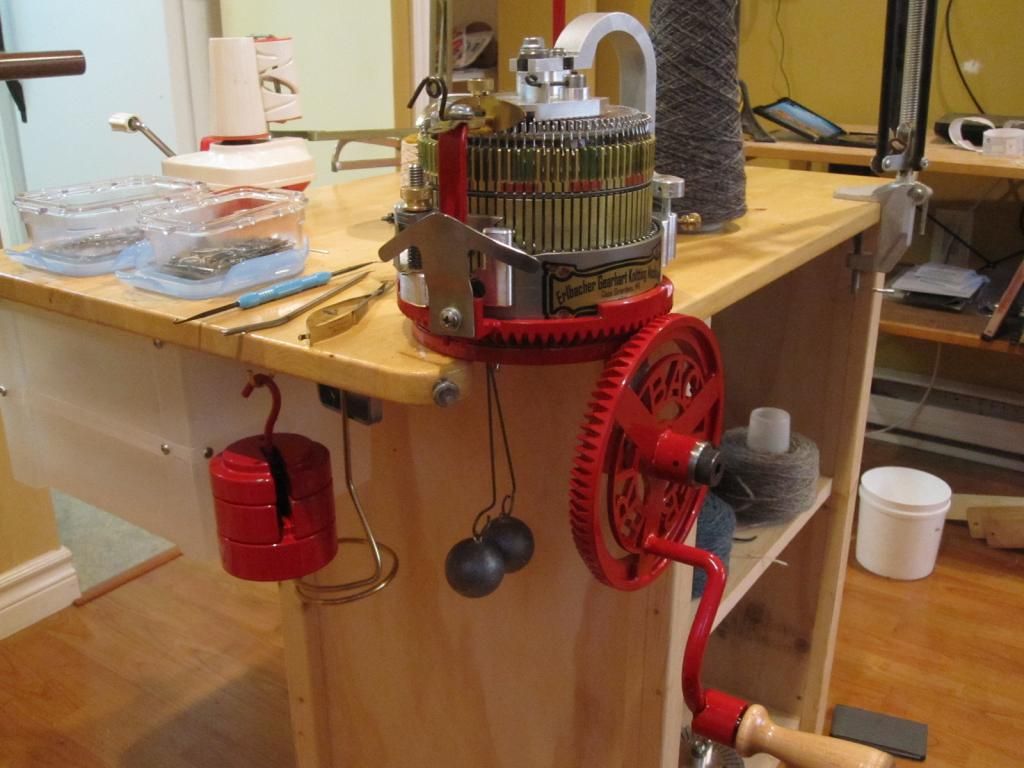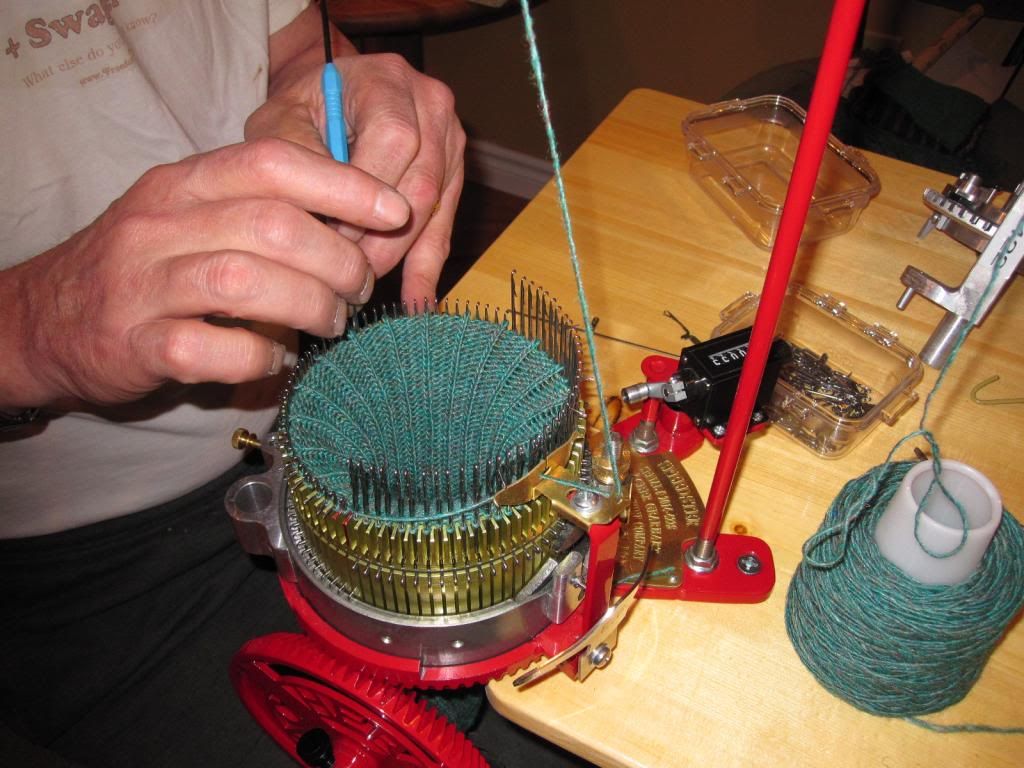|
-
26th July 16, 04:24 PM
#1
 Originally Posted by The Wizard of BC

I'm really sorry but my hand-crafted "Heritage" kilt hose are not on my website. These are custom made and fit to each individual customers measurements.
They are made on a circular sock knitting machine.


This something I got into a few years ago. I am now fully engrossed in these fantastic machines.
I have 11 different colors of yarn and many different cylinders and ribbers. Changing out between cylinders allow more or less needles to be used.
With these I can custom fit from very narrow to very very wide calves and can create different types and styles of ribbing down the leg.
I have one of these machines set up to make argyle hose but I'm still perfecting my technique. I have only made two pair of Argyles and they were not 100% perfect.
It is my hope that I can begin to offer hose for guys with really large legs or for guys who need something not available anywhere else such as one shorter foot. (I have one customer who lost the toes on one foot to diabetes)
It takes about four hours to make a pair of hose. Quite a bit more to make Argyles or to do cables down the leg. It is still far faster than hand knitting.
And I'm sorry but due to the cost of high quality sock yarns I'm not able to compete with the prices of mass produced hose. One pair of kilt hose has almost $50.00 worth of yarn.
I looked into a circular sock machine, a "some-work-needed" machine will nickel and dime you into the poor house it seems before it ever really works right, or at all.... I recall you had a thread on these machines, that's when I was inspired to try my hand at.... Buying hose from others.
"Everything is within walking distance if you've got the time"
-
The Following User Says 'Aye' to GrainReaper For This Useful Post:
-
26th July 16, 07:39 PM
#2
In response to the questions, I did dye in hot wated but rinsed in cold. I put them in the dryer for 10 minutes with an old towel then finshed by air drying.
They did not appear to shrink much at all. I will find out if my legs turn colors when I get a chance to wear them. Hopefully the dye stays put.
For my first time trying to dye something, I think it came out okay. I got the idea from my kid dying a lactosse head.
-
The Following User Says 'Aye' to Green Dragon For This Useful Post:
-
4th August 16, 06:23 PM
#3
They look great, a big improvement over the white.
I have some white hose sitting in a drawer, waiting for them to become "the thing" again!
Once in a while I have to haul them out due to having to do a matchy gig with another piper, and the other guy only having white 
Proud Mountaineer from the Highlands of West Virginia; son of the Revolution and Civil War; first Europeans on the Guyandotte
-
-
10th January 17, 07:17 AM
#4
dye
RIT dye is a "union" dye. It works well for all fibers, but requires 2 or 3 dips to get an even color.
Your socks are acrylic, so they will not shrink on you. As long as the dye was heat set, which sounds like it was, then you just need to rinse until no further color comes out of the fabric and you'll be fine. It won't come off on your legs. Any application of heat is fine: steam, microwave, oven, dryer...just be mindful of matching heat temperature to fiber tolerance.
To dye wool, soak the wool in a water/vinegar mix (acidic) to open the protein fibers to accept dye.
To dye cotton, soak in water/washing soda mix (alkali) for opening bast fibers before dying.
Creative dyers have posted that they mix prepared dye with gelatin to thicken it so that they can paint it on in specific areas, then heat set, and wash out the gelatin. Just more ideas;-)
-
-
14th July 17, 02:32 PM
#5
 Originally Posted by Voussoir

RIT dye is a "union" dye. It works well for all fibers, but requires 2 or 3 dips to get an even color.
Your socks are acrylic, so they will not shrink on you. As long as the dye was heat set, which sounds like it was, then you just need to rinse until no further color comes out of the fabric and you'll be fine. It won't come off on your legs. Any application of heat is fine: steam, microwave, oven, dryer...just be mindful of matching heat temperature to fiber tolerance.
To dye wool, soak the wool in a water/vinegar mix (acidic) to open the protein fibers to accept dye.
To dye cotton, soak in water/washing soda mix (alkali) for opening bast fibers before dying.
Creative dyers have posted that they mix prepared dye with gelatin to thicken it so that they can paint it on in specific areas, then heat set, and wash out the gelatin. Just more ideas;-)
I dyed some ecru hose back in 2010 using Rit dye. Results were fair. The hose I used were on the inexpensive side, meaning they had little-to-no actual wool content. They were mostly man-made fibers that didn't want to truly accept the dye. I posted about it here, although my photos are no longer active in that thread, thanks to Photobucket's recent change. I have long lost the photos of the dyeing process, but here's how they turned out in the long run. The dye was supposed to be dark green, but the synthetic fiber just never would hold fast the colour. In the end, I kind of like the "Lovat Green" effect that I was left with. It will turn the bottoms of my feet slightly green on hot summer days when my feet sweat in them. But other than that, the dye stays fairly consistently light green over time.

-
Tags for this Thread
 Posting Permissions
Posting Permissions
- You may not post new threads
- You may not post replies
- You may not post attachments
- You may not edit your posts
-
Forum Rules
|
|





















Bookmarks